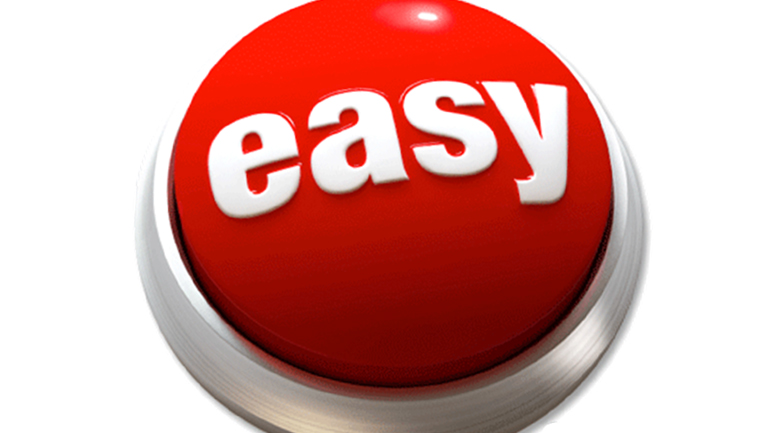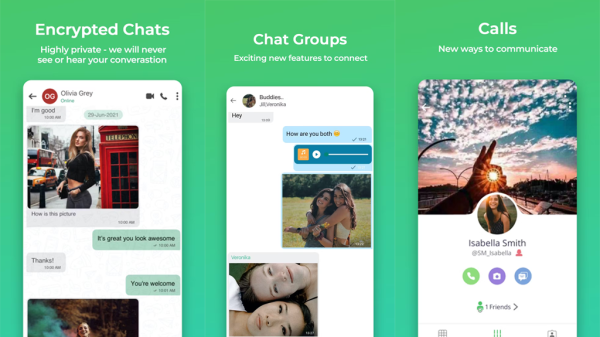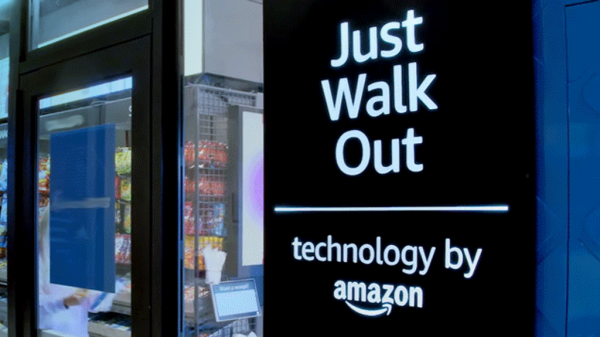
Startup marketing rarely matches coding efforts
Tech startups write hundreds of thousands of lines of code, alpha and beta test among friends and painstakingly obsess over UI/UX nuances few people care about to perfect their product. Yet when it comes to the actual marketing of the product, in most cases, it seems like a complete afterthought. As a tech startup veteran who started out in the cruel world of big ad agency creative departments, I cringe at nearly every launch’s logo, tagline, and messaging.
I have a difficult confession to share with you. I own a marketing agency and I hate my logo and my website.
It’s because the hardest thing to do is market something you’ve created yourself (read: we’re all cobbler’s children). You can’t see the haystack if you’ve convinced yourself you’ve created a pile of needles. Often, the same somewhat delusional optimism fueling the long hours that brings a startup to life is what kills its success by skimping on the messaging which is supposed to convince others of its value and why they should check it out versus play the latest move on Words With Friends.
When working with startups, an outside marketing firm can often be the voice of reason that tempers the irrational enthusiasm from “Everyone and anyone who owns a computer or might think about owning a computer will use GYDZPOOZ to share their innermost thoughts and fantasies with those that matter!” to “We’ve found a core group of over-sharing 45-year-old divorcees who can’t afford therapy to be our biggest growth opportunity.”
How startups come up with their marketing:
The name: ZWQEELIO.com is available! We’ll spend a little more money branding it but I like how “Zwqeelio” rolls off the tongue!
The tagline: ___________ the easy way! or The easy way to _________!
The logo: Hey, I have this free font on my computer. I just typed out the name and it looks pretty good. I can’t believe people get paid millions of dollars to do this!
The copy: We’re so awesome! Can we just tell you how incredibly excited we are that we came up with this idea and raised $450,000 in Group Z, Series 45 funding from the fine folks at HFDSI Capital? We got to fly in a Lear Jet and sign the docs at 35,000 feet while slurping Krug from a swimsuit model’s belly button! Sign up now!
The positioning: Everyone needs ZWQEELIO! We can’t imagine why a single person, even some highly trained chimpanzees would not want to use it!
How ad agencies come up with ideas:
The name: Ideally the name should be somewhat descriptive of what you do. Even if you have to pay a fortune for a domain name, it’s far less expensive than the amount of marketing it takes for someone to remember a gibberish name just because you were able to snag it for $8.99 on NameCheap. Sure, you can create a “brand” from scratch. You just need 100 years or $100 million. Let me know which route looks best to your investors.
Good names: Meetup, Instagram, TaskRabbit, Airbnb, Hotel Tonight, Living Social. When I started a social network for advertising creatives I called it Adholes – a good name because it also set the tone and vibe for the site filled with snarky, irreverent, bitter art directors and copywriters; a bad name when Adobe expressed interest in advertising and the executives found the name “offensive.” Still, it was short, memorable, and generated word of mouth when there was zero budget to promote it.
The advisable method is to use a working title, but find a third party to negotiate buying a memorable domain name and put it into your budget for your first round of investment. It may be the best $5,000 to $10,000 you ever spend.
The logo: This is where it’s fine to go the cheap route. If your product is truly useful, people are not going to care much about a fancy logo. Leave those for craft beers and fragrance bottles. FourSquare’s logo is pretty awful. Facebook is the aforementioned typeface…typed out. I doubt a single user ever said “Wow, it’s really great that I can connect with all of my friends and share everything with them on this free platform that magically advertises things to me that I’m interested in, but I really don’t like their logo so I think I’ll stick with MySpace.”
There’s the famous story where Phil Knight was working with a freelance designer on the Nike logo. When she gave him the swoosh, he hated it but was late for an investor meeting and took it with him anyway. “I guess I’ll have to learn to like it.” That’s likely the process you and your audience will go through even if you don’t do a great job on the logo.
The tagline: This is where you should probably enroll in Miami Ad School, work in an ad agency creative department for two years, binge watch all five seasons of Mad Men, and read lots and lots of books on marketing. Or leave it to a professional. And by professional, I do not mean your cousin who minored in Creative Writing at the University of Lake George Online.
A tagline is between three and eight words that very succinctly sums up the brand philosophy into a single statement. And “Just Do It” is taken. To give you a sense of how long we spend on taglines in an ad agency, it’s not uncommon for a single copywriter to fill an entire yellow legal pad with tagline ideas. We then bring the best 50 or so to our creative director who says things like “We thought of that back in ’72 when we were working on Brill Cream. Nice try though. Out of all of these, these two are ok, I guess. Go back and come up 500 with more like these.”
Multiply that by several teams working at a big agency. I’m not saying it’s not possible that a talented founder who is passionate about their startup can’t come up with something succinct and usable, but it is important to understand that there’s a work ethic involved with finding the best option, just as there was in writing thousands of lines of code and extensively testing the product. There’s no reason why some more effort can’t be put into a tag than “The easy way to order chocolate-covered tofu online!”
If you don’t have time to go to ad school and can’t afford an agency, you can probably ask some of the advertising schools to give you some recent grads who will likely have some fresh, insightful and snarky ideas at a price you can afford (and no, that does not mean free, you monster!).
The copy: Again, it is best left in the hands of a professional, but here’s one key tip. Every time you have the urge to write “we,” try to find a way to replace it with “you.” Remember, no one really cares about what your team did or why you did it. You work for the customer because hopefully they, times millions of others, will make you very rich.
The positioning: This can be somewhat trial and error. The best thing to do is to try to actually describe a very specific ideal person, who they are, and how they will use the product. Then come up with other scenarios and people. Following that, when you launch, you’ll realize you’re wrong, and you will talk to your users and find out what the real deal is and adjust accordingly.
But trust me, there really are people who don’t find Facebook useful. There are many more who won’t find yours interesting either. An example of narrowing down a profile: “Nancy is a 45-year old chain-smoking divorcee whose husband left her for his 19-year-old co-ed Ultimate Frisbee coach. She recently lost her job as Assistant Brand Manager at The Dress Cave and is supplementing her unemployment by being the off-the-books hot wax operator at the local car wash. Her life sucks and she’s distrustful of major social networks, which is why she shares her frustrations with her closest confidants on ZWQEELIO, whose privacy algorithms and policies are unmatched.”
A great book to check out when creating your messaging is Made To Stick. In it, they describe the “tapping test” where one person taps out the song “Happy Birthday” to another person and asks them what song it is. As the person is tapping, they hear the song “Happy Birthday” in their head. Without this audio cue, the person being tapped to has no idea and just hears a bunch of random taps. Often our ideas fail the tapping test because what’s so obvious to us based on our exposure to the problem/solution is not apparent to someone encountering it for the first time. I failed the tapping test with my own website – when on a Skype call with a partner agency in Brussels, the owner said “You know, you seem really talented and accomplished, but I still have no idea what you do.”
Succeeding at marketing your startup
In order to succeed at your startup’s marketing, you have to be your own most brutal critic. Optimism is great, but here’s the reality: you must face the fact that it’s entirely possible that no one cares about the problem you’re solving. Often, startup ideas are hammers looking for nails. Remember that we live in the future.
There is a new Jetsons-like technology and an amazing new free app to download nearly every hour. When we finally get our hoverboards, we’ll just yawn and go “Well, it’s about time.” Understand that you’re likely releasing a product to an apathetic, drained audience who will forget you ever existed in a week unless your messaging is clear about what real problem you’re solving.
In advertising we say “good is the enemy of great.” In startups, “great is the enemy of good enough.” Those two philosophies are constantly at odds when trying to combine an ultralight startup mentality with a successful marketing program, but truly striking messages come only from a combination of creativity and hard work. There’s no doubt that loads of effort is put into any new product development – why squander it by only spending 10 minutes on the message?
Marc Lefton is a creative director and tech entrepreneur with over 20 years of experience. He's a partner in Digikea Digital based in NYC and Gainesville, Florida.












































Tinu
March 1, 2013 at 3:36 pm
Truer words were never written. Mostly because people believe that if they hoard this knowledge, they have more to gain than they do by sharing it. The truth is that people who want to succeed are reading this to find people like you who can better help them. I, too, hate my logo and…when was the last time I updated my tag line? Thanks for the fresh perspective.
Jeff Beck
March 2, 2013 at 10:38 am
This a really good piece, although you have a problem in the 1st sentence…
“Startups endlessly pour over the quality of their product”
agbenn
March 2, 2013 at 12:49 pm
Great catch, should have been caught in edit.
Ethnic Assets
March 18, 2013 at 12:46 pm
Bravely and well said! … a little close to the bone on how start-ups do concepts! #owch!